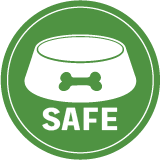Hot Weather, No Problem — Grooming Hacks Your Pet Will Love
Out in the sun with your pet? While it's the perfect time for outdoor activities, make sure your pet stays cool and safe with these grooming tips.

STORY AT-A-GLANCE
- Different breeds require specific care during hot days. For example, double-coated dogs need daily brushing, curly coats need trimming
- Daily brushing removes loose hair, prevents matting, improves air circulation, and helps detect skin issues like infections, allergies, or parasites early
- To properly bathe your pet, use lukewarm water and pet-safe shampoo. In addition, brush them before baths, and bathe them monthly only or as needed
- Trim your pet's nails regularly, check paws for debris after walks, dry ears after water play, and use pet-safe ear cleaners to prevent infections
- Watch for hot spots, provide shade and cool water, avoid hot pavements, use cooling accessories, and protect vulnerable breeds from sun damage
Summer is about to end, and chances are you and your pet are spending as much time as you can enjoying the sunny weather while it's still here. That said, it's important to keep your pet's coat and skin health in top shape should you bring them outdoors for noontime walks or afternoon playtime.
While grooming should be a regular part of your dog's care, improper technique can lead to fur problems that result in overheating while outdoors. If you're looking to up your pet-grooming skills, the following tips can easily keep your pet cool, comfortable, and shed-free during warm days.
Understanding the Anatomy of Your Pet's Coat
Pets have different grooming needs, and knowing your pet's coat type helps you provide the right care. Here's an overview of the most common coat types:
- Double-coated breeds — Pets with thick, double coats (like Huskies, Retrievers, and Shepherds) have insulating undercoats that shed heavily in summer. During summer, it might feel like your pet is constantly shedding, but this is perfectly normal.1 Here's what you can do:
- Brush your pet daily with an undercoat rake to remove excess fur and improve air circulation.
- Avoid shaving them. Their coats protect them from sunburn and overheating.
- Curly or wavy-coated breeds — Pets with curly coats (like Poodles and Doodles) can trap heat and moisture, making them prone to uncomfortable mats.2 Make sure to keep their coats trimmed short (but not shaved) to manage fur-matting and maintain comfort. Regular brushing helps prevent tangles, especially before bath time.
- Short-haired breeds — If you have a Boxer, Beagle, or Pit Bull, they will shed more than you might think and can still get sunburned.3 Brush them weekly with a rubber brush or a de-shedding tool and apply pet-safe sunscreen on sensitive areas like noses and ears; especially if your pet has white fur in these areas.
The Importance of Regular Brushing
Regular brushing doesn't only reduce shedding — it keeps also your pet cool and healthy. It removes loose hair, dirt, and as mentioned earlier, matted hair that traps heat and moisture. Brushing also helps you spot skin issues early, such as infections, allergies, or parasites (such as fleas or ticks).4
Is your pet not fond of being brushed? You can make it a pleasant experience by starting gently for a short brushing session and offering your pet’s favorite treats. Over time, your pet will learn to enjoy grooming as another bonding activity.
In relation to brushing, another important topic that warrants discussion is getting a summer cut for pets. While this style may look refreshing, not every pet needs it because their fur plays a role in blocking sunlight and heat. In double coated breeds shaving the hair coat is not recommended. However, in curly or wavy coated breeds it can:5
- Reduce matted and tangled fur
- Reduce time to clean pet after a swim
- Improve airflow for pets with thick coats
How to Safely Bathe Your Pet
Bathing your pet helps manage summer-related skin issues like fleas, ticks, and hotspots, as well as keep them clean and fresh after rolling in the dirt. But frequent baths can dry out their skin and not drying them properly after a bath can also contribute to skin infections. Here’s how to bathe your pet safely:6
- Brush out mats and tangles before bathing. Use a wet-dry brush to help make the process easier.
- Use lukewarm or cool water and pet-formulated shampoo to protect their sensitive skin.
- Be careful around their eyes, ears, and mouth. Use a damp cloth for these sensitive areas instead of spraying them directly with water.
- Use a special pet shampoo or mild castile soap; you can also add a few drops of essential oils such as lavender (just avoid your pet’s eyes and mouth).
- Rinse thoroughly to prevent skin irritation from any leftover shampoo. Especially underneath your pet's belly, under their tail and around their armpit and groin area.
- Dry your pet carefully, especially their underside, to prevent their coat from staying damp and causing skin infections, as well as their paws, to avoid slips and falls.
Now, how often should you bathe your dog? According to the American Kennel Club (AKC):7
"Every few weeks or once a month is enough. Frequent bathing can strip away essential oils, making the skin itch and drying out the coat. If you need to clean your dog in-between baths, there are leave-on sprays that condition and clean. You can also use a damp towel to wipe off dirt."
Protect Your Pet's Paws and Ears
Summer means more outdoor play, which can wear down nails unevenly or cause paw injuries. To keep your pet's paws in top shape:
- Keep their nails trimmed to avoid painful breaks.
- Check their paws regularly for sharp objects, like thorns or glass.
- Wipe their paws after walks to remove chemicals or allergens afterward.
If your pet enjoys the water, it can eventually lead to moisture buildup in their ears, increasing the risk of infections. To maintain ear health:
- Dry your pet's ears gently after they've had their fun in the water.
- Use pet-safe ear rinses to clean ears and prevent infections.
Keeping Your Pet Comfortable Outdoors
Summer heat can cause skin irritations like hot spots — painful, itchy areas that pets tend to lick excessively.8 Regular grooming helps you detect these spots early. If your pet has hot spots, there are four steps to treating them naturally:
- Shave — Comb through your dog’s fur until you find a hot spot, then carefully shave the hair over it, as well as the surrounding area.
- Disinfect — Once the area has been shaved, disinfect the wound using povidone iodine (diluted with purified water) via a soft washcloth or gauze.
- Soothe — After cleaning the wound, apply a natural topical solution like colloidal silver, calendula cream, a thin layer of manuka honey, or raw aloe.
- Protect — To keep your pet from licking the hot spot, consider using an E-collar until the affected area heals. If your pet doesn't like this accessory, an alternative is putting a t-shirt on them.
Besides regularly grooming and inspecting your pet's skin for hot spots, you can help them generally stay cool by:9
- Providing plenty of fresh, cool water.
- Offering shaded areas when outdoors.
- Avoiding hot pavements during peak heat hours to protect their paws.
- Using cooling accessories like wet bandanas or cooling mats.
Is Your Dog at Risk for Skin Damage?
Protecting your pet from excess outdoor heat is important but be aware that certain dog breeds are more vulnerable to skin damage compared to other breeds. If your pet falls under these breeds or categories, keep these pointers in mind:10
- Dogs with white or light-colored fur and pink skin have coats and complexion that do not provide as much natural protection against the sun. Examples are Dalmatians and Bull Terriers.
- Hairless breeds like the Chinese Crested, American Hairless Terrier, and the Xoloitzcuintli, are also at higher risk due to their lack of protective haircoat.
- Dogs with thin coats, like the Whippet, or with patchy coats or hair loss are also more vulnerable. Certain dog breeds can have patchy coats naturally, but dogs can also have medical issues such as Cushing’s disease or types of alopecia that create thin and patchy coats.
- Puppies and older dogs have more delicate skin.
- Dogs with pre-existing skin conditions (such as allergic dermatitis, scars, or skin tumors) or those undergoing certain medical treatments need proper protection.
Keeping your pet's coat and skin healthy and cool during warm days doesn't have to be complicated. Simply practice these tips regularly until it becomes second nature. In time, you and your dog will enjoy grooming as another bonding activity. Moreover, you'll be reducing the risk of heat-related diseases for your pet and keep vet costs down.










